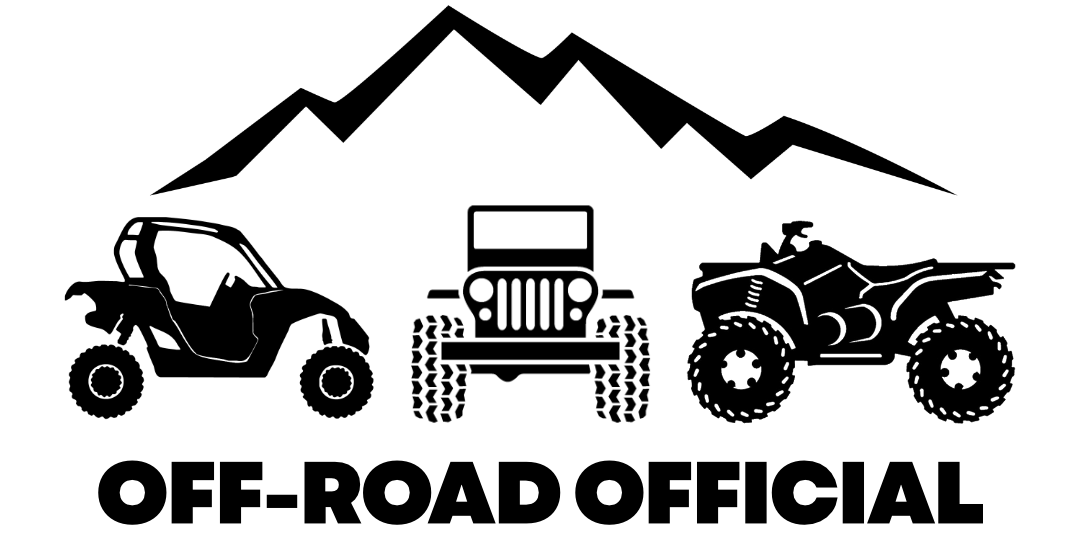When the Yamaha Raptor 250 came along in 2008, it was one of the first true sport ATVs that catered to younger and smaller riders.
As one of the lightest ATVs ever produced, it handles exceptionally well and is lightning quick.
So how does this lightweight build and quickness transfer to top end speed?
And what are some of its main pros and cons to consider before buying one?
This guide will review the Yamaha Raptor 250 top speed, along with the following:
- Highest recommended modifications to make it faster
- Stock vs modified Raptor 250 top speed
- Key pros and cons of this model
- Key specs and features of this model
Yamaha Raptor 250 Top Speed
Powered by a 249 cc single cylinder engine with around 17 horsepower, the Yamaha Raptor 250 top speed is 54 to 55 mph in unmodified units.
Similar to its bigger brothers and two of the fastest ATVs in the industry, the Raptor 700 and Raptor 660, the Raptor 250 also features impressive acceleration and can reach its top speed in a matter of 7 or 8 seconds.
Increasing The Speed
If 54 to 55 mph is not enough for you, there are ways to increase the top speed of the Raptor 250 to 65+ mph.
Similar to the ever popular Raptor 700 Big 3 modifications, a number of owners have maximized the speed of their Raptor 250 by upgrading the intake and exhaust systems, and then optimizing the air to fuel ratios afterwards by re-jetting the carburetor.
Upgrade The Intake System
The intake system consists of components such as the airbox and air filter.
It funnels clean air into the engine so that it can breathe, and is also responsible for determining how much fuel can be fed to the engine.
But the air intakes in the faster Raptor models are notorious for choking out the top half of the RPM ranges, limiting the speed and power available at full throttle.
By making modifications to the airbox and upgrading the air filter, you’ll eliminate this issue and enable more airflow into the engine while ensuring this added air is free of debris so the engine runs better.
The more air in and out, the more power your Raptor 250’s engine can generate. But even after modifying the air intake, you’ve still got some work to do to fully accomplish this.
Upgrade The Exhaust System
Upgrading the exhaust system is the second piece to generating more power and speed in your Raptor 250.
By upgrading the stock exhaust, you’ll provide a more efficient escape for the added airflow once used up.
This will help to provide more horsepower and torque for your quad across all gears.
And let’s not forget about the more aggressive growl that it will provide your Raptor 250 when riding.
Re-Jetting The Carburetor
Any time you modify the airflow of your Raptor 250 by way of an upgraded intake, exhaust, or both, you’ll need to account for this by re-jetting the carburetor.
Doing so will increase the fuel flow to account for this added airflow, and ensure the air to fuel ratios are optimal.
Re-jetting is essential in not only ensuring your quad maximizes its full power and speed potential after any upgrades, but also in making sure you don’t harm your engine after making modifications.
Increase The Gearing
The Raptor 250 comes stock with a 14-tooth sprocket in front and a 38-tooth sprocket in the rear.
To increase the top end speed, you can add a slightly bigger sprocket up front. Going to a 15-tooth or 16-tooth sprocket in front has netted the best results for speed with this model.
It is important to note that there is a tradeoff here though, as increasing the size of the front sprocket will also result in decreased acceleration, so you don’t want to overdo it.
Upgrade To Bigger Tires
The Raptor 250 is equipped with 20-inch stock tires in the front and 19-inch stock tires in the rear.
Replacing these with bigger aftermarket 21-inch tires in the front and 20-inch tires in the rear should translate to more top end speed for your Raptor.
Raptor 250 Specs & Key Features
Engine & Drivetrain
The Raptor 250 is powered by a 249cc engine with a power output of around 20 horsepower.
It offers good low-end power and torque with excellent throttle response making for quick revving.
The engine is air-cooled, but does feature an oil cooler that is fitted under the front cowling.
A 29 mm Mikuni carburetor and a wet-type air filtration system provide the air-fuel mixture.
The drivetrain consists of a five-speed constant mesh sealed O-Ring chain drive and a wet clutch system, which power the rear wheels.
This model lacks a Reverse setting and only features two-wheel drive.
| Engine Type | 4 Stroke, SOHC |
| Cylinder Arrangement | Single Cylinder |
| Displacement | 249 cc |
| Engine Cooling | Air-Cooled |
| Horsepower | 20 HP |
| Fuel Delivery | Mikuni Carburetor |
| Fuel Capacity | 2.4 US Gallons |
| Drive System | Chain Drive, Sealed O-Ring, 2WD |
| Transmission Type | Manual, Constant Mesh 5-Speed |
Tires & Brakes
The Raptor 250 is outfitted with Dunlop KT201 AT 20 x 7-10 tires up front and Dunlop KT205A AT 19 x 10-9 tires in the rear.
The dual hydraulic disc brakes in front are operated by a lever on the right handlebar, while the hydraulic disc brake in the rear is operated by a foot pedal in the right footwell area.
The brakes offer plenty of stopping power and don’t require you to apply much pressure when using them.
| Front Tires | 20 x 7-10 (Dunlop) |
| Rear Tires | 19 x 10-9 (Dunlop) |
| Wheels | Aluminum |
| Front Brake Type | Dual Hydraulic Disc |
| Rear Brake Type | Hydraulic Disc |
Suspension
The Raptor 250 features an independent double wishbone suspension with preload adjustable shocks up front.
In the rear, there’s a swing arm link suspension with nitrogen-charged shocks and a chain-adjuster.
The preload adjustable shocks offer riders five different settings to choose from so they can find the perfect amount of dampening for their riding style.
This suspension set-up offers a smooth ride in most terrains, with 7.5 inches of wheel travel in front and 7.9 inches of travel in the rear.
With a ground clearance of only 3.9 inches, you should be considerate of the types of trails you ride this on as it doesn’t offer much room to clear rocks, logs, or ruts.
| Wheelbase | 43.7 inches |
| Ground Clearance | 3.9 inches |
| Front Suspension | Independent Double Wishbone |
| Rear Suspension | Swing Arm |
| Travel | Front – 7.5 inches, Rear – 7.9 inches |
Dimensions
The Raptor 250 features a compact build geared towards younger, smaller riders. At just 331 lbs, it was one of the lightest sport models ever made.
This compact size and light weight give it a distinct advantage when riding, making it extremely easy to handle.
This also helps with its initial acceleration, making it quite speedy off the line and very agile on the trail or track.
While it is a smaller model, it does have enough power to motor riders of just about all sizes around.
| Length | 64 inches |
| Width | 42.1 inches |
| Height | 40.9 inches |
| Curb Weight | 331 lbs. |
Pros & Cons
Pros
- Small build and light weight makes it incredibly easy to handle, especially for younger and smaller riders.
- Excellent power output offers plenty of fun for riders of all ages while not being too powerful for riders of lesser skill levels.
- Throttle response is excellent throughout the gears.
- Compact size and excellent agility make it a great trail option.
- The stock tires and wheels offer plenty of stability and traction in all terrains, whether trail riding or road riding.
- Suspension system makes for an ultra smooth ride, with preload adjustable shocks giving riders the ability to find the perfect setting for their riding style.
- The location of components such as the filters, chain adjuster, grease fittings on the suspension, and easily detachable plastics make maintenance and repair easy.
- The Raptor 250 is as good as you’ll find performance-wise in the 250cc class.
Cons
- Intended as more of a “starter” ATV, riders may quickly outgrow this model.
- Small build makes it difficult for adults over a certain size/weight to ride.
- Lack of a Reverse setting makes it harder to turn around on trails or get out of sticky situations.
- The manual clutch system is easy to use, but can be confusing for riders without much experience.
- Lack of ground clearance leads to bottoming out on obstacles in the trail easier, especially with heavier riders on.
- The stock grab bars in the front and rear are prone to damage and are not of the highest quality.
Closing Thoughts
With a lightweight and compact build, the Raptor 250 was designed as a machine for smaller riders to be able to easily handle while out on the trail.
Even so, this model still can really move for its size.
While the Yamaha Raptor 250 top speed is 54 to 55 mph, owners who have made some of the modifications outlined above have found they can reach top speeds of 65+ mph in their improved ATVs.
For more on Yamaha Raptors, check out the following guides before you go:


